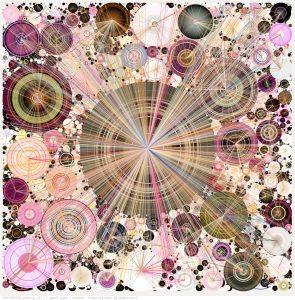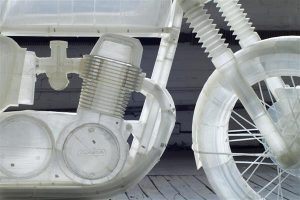// Simple beginning template for variable face.
var eyeSize = 30;
var eyeHeight = 2.5 * eyeSize;
var eyeWidth = 2 * eyeSize;
var faceWidth = 300;
var faceHeight = 300;
var canvasWidth = 640;
var canvasHeight = 480;
var pupilWidth = 10;
var pupilHeight = 15;
var mouthStroke = 3;
var llWall = canvasWidth / 2 - eyeSize - pupilWidth;
var lrWall = canvasWidth / 2 - eyeSize + pupilWidth;
var rlWall = canvasWidth / 2 + eyeSize - pupilWidth;
var rrWall = canvasWidth / 2 + eyeSize + pupilWidth;
var tlWall = canvasHeight / 2 - eyeSize * 3 - eyeSize;
var blWall = canvasHeight / 2 - eyeSize * 3 + eyeSize;
var trWall = canvasHeight / 2 - eyeSize * 3 - eyeSize;
var brlWall = canvasHeight / 2 - eyeSize * 3 + eyeSize;
var mouthStart = 320;
var noseSize = eyeSize
var backgroundColor = 1;
var headColor = 1;
function setup() {
createCanvas(640, 480);
}
function draw() {
switch(backgroundColor){
case 1:
background('pink');
break;
case 2:
background('lime');
break;
case 3:
background(71, 170, 215);
break;
case 4:
background('magenta');
break;
case 5:
background('cyan');
break;
case 6:
background('orange')
break;
case 7:
background(237,204, 248);
break;
case 8:
background('yellow');
break;
}
//head
noStroke();
switch(headColor){
case 1:
fill(71, 170, 215);
break;
case 2:
fill('yellow');
break;
case 3:
fill('lime');
break;
case 4:
fill('red');
break;
case 5:
fill('orange');
break;
}
strokeWeight(3);
ellipse(canvasWidth / 2, canvasHeight / 2, faceWidth, faceHeight);
//white fills on face
noStroke();
fill('white');
ellipse(canvasWidth / 2, canvasHeight / 2 + eyeSize, faceWidth/1.25, faceHeight/1.25);
//eyes
ellipse(canvasWidth / 2 - eyeSize, canvasHeight / 2 - eyeSize * 3, 2 * eyeSize, 2.5 * eyeSize);
ellipse(canvasWidth / 2 + eyeSize, canvasHeight / 2 - eyeSize * 3, 2 * eyeSize, 2.5 * eyeSize);
//pupils
var xrL = constrain(mouseX, llWall, lrWall);
var xrR = constrain(mouseX, rlWall, rrWall);
var yrL = constrain(mouseY, tlWall, blWall);
var yrR = constrain(mouseY, trWall, brlWall);
noStroke();
fill('black');
ellipse(xrL, yrL, pupilWidth, pupilHeight);
ellipse(xrR, yrR, pupilWidth, pupilHeight);
//mouth
noFill();
stroke('black');
strokeWeight(mouthStroke);
line(canvasWidth / 2, canvasHeight / 2 - eyeSize * 1.6 + pupilHeight, canvasWidth / 2, mouthStart);
arc(canvasWidth / 2, mouthStart - faceWidth / 4, faceWidth * 0.65, faceWidth * 0.5, 0, PI, OPEN);
//left whiskers
line(canvasWidth / 2 - 1.75 * eyeWidth, canvasHeight / 2 - eyeSize * 1.6, canvasWidth / 2 - noseSize, canvasHeight / 2 - eyeSize * 1.6 + pupilHeight);
line(canvasWidth / 2 - 1.75 * eyeWidth, canvasHeight / 2 - eyeSize * 1.6 + pupilHeight * 2, canvasWidth / 2 - noseSize, canvasHeight / 2 - eyeSize * 1.6 + pupilHeight * 2);
line(canvasWidth / 2 - 1.75 * eyeWidth, canvasHeight / 2 - eyeSize * 1.6 + pupilHeight * 4, canvasWidth / 2 - noseSize, canvasHeight / 2 - eyeSize * 1.6 + pupilHeight * 3);
//right whiskers
line(canvasWidth / 2 + noseSize, canvasHeight / 2 - eyeSize * 1.6 + pupilHeight, canvasWidth / 2 + 1.75 * eyeWidth, canvasHeight / 2 - eyeSize * 1.6);
line(canvasWidth / 2 + 1.75 * eyeWidth, canvasHeight / 2 - eyeSize * 1.6 + pupilHeight * 2, canvasWidth / 2 + noseSize, canvasHeight / 2 - eyeSize * 1.6 + pupilHeight * 2);
line(canvasWidth / 2 + 1.75 * eyeWidth, canvasHeight / 2 - eyeSize * 1.6 + pupilHeight * 4, canvasWidth / 2 + noseSize, canvasHeight / 2 - eyeSize * 1.6 + pupilHeight * 3);
//nose and highlight
noStroke();
fill('red');
ellipse(canvasWidth / 2, canvasHeight / 2 - eyeSize * 1.6, noseSize, noseSize);
noStroke();
fill('white');
ellipse(canvasWidth / 2 - 1, canvasHeight / 2 - eyeSize * 1.63, pupilWidth, pupilWidth);
}
function mousePressed() {
// when the user clicks, these variables are reassigned
// to random values within specified ranges. For example,
// 'faceWidth' gets a random value between 75 and 150.
faceWidth = random(10, 250);
faceHeight = random(150, 250);
eyeSize = random(10, 40);
noseSize = random(10, 70);
backgroundColor = int(random(1,8));
headColor = int(random(1,5));
}
As a child, one of my favorite cartoons was Doraemon. I always wondered if there were more to the Doraemon family and if they were in different colors. I also took inspiration from a scene in Guardians of the Galaxy volume 2, I’m not gonna specify which scene.
![[OLD FALL 2018] 15-104 • Introduction to Computing for Creative Practice](https://courses.ideate.cmu.edu/15-104/f2018/wp-content/uploads/2020/08/stop-banner.png)

